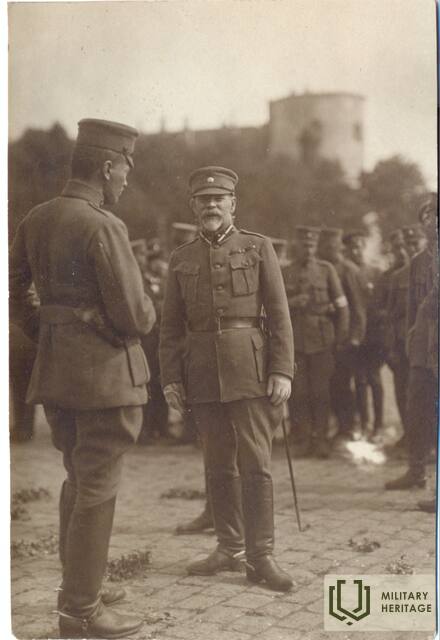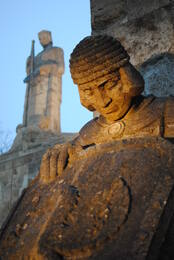Dāvids Sīmansons (1859–1933), Latvijos kariuomenės vyriausiasis vadas, saugumo ministras, generolas
I WW1, I Nepriklausomybės karai

Dāvids (taip pat Dāvis) Sīmansons gimė 1859 m. kovo 23 d. (einamųjų metų balandžio 4 d.) Pilātu dvare, Valmieros valsčiuje. Baigė Limbažų rajono mokyklą. 1880 m. Jis savanoriu įstojo į 115-ąjį Vyazmos pėstininkų pulką. 1882 m. baigė pėstininkų junkerių mokyklą Rygoje. Studijavo Generalinio štabo akademijoje Sankt Peterburge. Dalyvavo Rusijos ir Japonijos kare. Nuo 1910 m. pulkininkas. 1912 m. balandžio mėn. paskirtas 66-ojo pėstininkų pulko vadu. Nuo 1914 m. dalyvavo Pirmojo pasaulinio karo mūšiuose su vokiečių kariuomene Lenkijos, Lietuvos ir Latvijos teritorijose. 1915 m. gegužę buvo pakeltas į generolą majorą ir paskirtas 17-osios pėstininkų divizijos 2-osios brigados vadu. Apdovanotas Stanislovo I III laipsnio, Onos III laipsnio, Vladimiro III IV laipsnio, Šv. Jurgio ordino kardas. Tarnybą paliko 1917 metų spalį. Iki 1919 m. Iki sausio gyveno Vitebske ir Oriolyje. 1919 01 08 grįžo į Rygą.
D. Sīmansonas į Latvijos kariuomenę įstojo 1919 metų birželio 6 dieną, o nuo liepos 10 dienos tapo vyriausiuoju kariuomenės vadu. Nuo liepos 15 iki rugsėjo 10 dienos gynybos ministras. Spalio 16 dieną jis buvo atleistas iš vyriausiojo vado pareigų. 1919 m. vasarą D. Sīmansonas ėmėsi formuoti Latvijos kariuomenę iš savo pobūdžiu ir forma besiskiriančių dalinių, neturinčių pakankamai atsargų ir technikos, visuotinės karinės ir politinės sumaišties sąlygomis, nes Laikinoji vyriausybė ėmė organizuoti valstybės aparatą tik iš dalies išlaisvintoje šalyje, kuriai trukdė daug vidaus ir išorės priešų. Šioje sunkioje situacijoje jam taip pat teko vykdyti diplomatines funkcijas santykiuose su užsienio atstovybėmis ir vadovavimo išorės ginkluotosioms pajėgoms, spręsti Vokietijos Landesvero pertvarkymo į Latvijos kariuomenės dalinį klausimą ir kt. Sėkmingai įvykdė savo užduotis, padėjo Latvijos kariuomenės organizacinius ir struktūrinius pagrindus.
Už protingus ir energingus veiksmus per Bermonto puolimą 1919 m. rugsėjo 9-10 d. 1926 m. spalį Davidas Simonsonas buvo apdovanotas Lāčplėsio karo 3 laipsnio ordinu.
Nuo 1920 m. gruodžio mėn. buvo Saugumo ministerijos tarybos narys (nuo 1922 m. – Karas). 1924 m. paskirtas laikinai eiti Karo ministerijos tarybos pirmininko pareigas. 1925 metų vasarį D. Simansonas dėl ligos buvo atleistas iš kariuomenės. Davidas Simonsonas mirė 1933 m. sausio 13 d. Palaidotas Rygoje, Brolių kapinėse.
Atminimo lenta Davidui Sīmansonui buvo atidengta 2014 metais Limbažuose prie buvusios rajono mokyklos (skulpt. Jānis Strupulis).
Daugiau informacijos šaltinių
Erikas Jacobsonas. Davidas Simonsonas. – Nacionalinė enciklopedija: https://enciklopedija.lv/skirklis/29934-D%C4%81vids-S%C4%ABmansons
Lāčplėsio karo ordino kavalieriaus Davido Sīmansono biografija: http://lkok.com/detail1.asp?ID=1402
Susijusi laiko juosta
Susijusios vietos
Brothers' Cemetery in Riga
Riga Brothers’ Cemetery is located in the northern district of Riga. The cemetery extends over an area of 9 ha and is the most outstanding and significant memorial ensemble in Latvia dedicated to the fallen Latvian soldiers. About 3,000 soldiers are buried here. The Brothers’ Cemetery was created during World War I after the first three Latvian Riflemen, who fell in Tīreļpurvs in the battle against the German Army, were buried here. Later Latvian soldiers who had died in other battles and wars would also be buried in the Brothers’ Cemetery. The memorial is based on the design of the sculptor Kārlis Zāle, and is the first memorial ensemble in Europe with such landscape, architecture and sculptural value. It uses elements typical to the Latvian landscape, traditional farmsteads, Latvian folklore and history that praise the characteristics of soldiers and tell the story of the way of the soldier. The memorial was unveiled in 1936 and it has three parts: ‘The Road of Though’ which is a 250 m long alley, ‘Terrace of Heroes’ with the Altar of the Sacred Flame and ensemble the Sacred Oak Grove, and the burial ground with the Latvian wall and a memorial of a mother with her fallen sons.
Susijusi istorija
Apie pirmąjį Latvijos kariuomenės vadą Dāvidą Sīmansoną
Knygoje „Latvijos kariuomenės vadai“ esantys rašiniai įtikina, kad istorijai didelę įtaką daro konkretūs asmenys. Nors svarbiausių istorinių įvykių epicentre jie buvo neilgai, tikri Latvijos patriotai, turėdami turtingą karinę patirtį, sugebėjo daug nuveikti formuojant ir stiprinant Latvijos kariuomenę bei istorinių įvykių lūžio momentuose.
Ši istorija pasakoja apie pirmąjį Latvijos kariuomenės vadą Dāvidą Sīmansoną (1859-1933).






